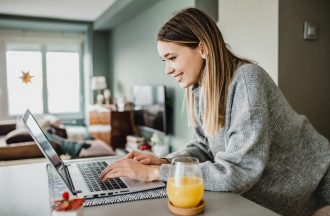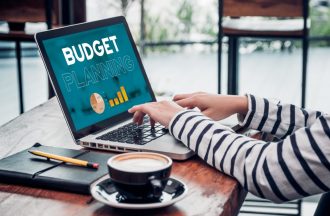
Maximizing quality while minimizing expenditures is the primary goal of each product manufacturing company worldwide. This feat is the heart of every highly successful product-providing company and essential for its vertical expansion.
And product development operations are often lengthy and expensive. Production expenditures are usually contingent on many different factors, and selecting the right ones to cut without hurting the essence of your final product along with your company’s reputation, is always a challenge.
Nonetheless, it doesn’t mean that you have to cut or alter some parts of the manufacturing cycle to cut individual costs. Sometimes, with the right approach through adequate technologies and manufacturing processes, you can take a product from concept to reality while keeping expenditures as low as possible.
Reducing product development expenditures doesn’t only mean that your company will need less money to get the product off the ground. Still, it will also enable your organization to turn a profit more quickly. In the following paragraphs, we’ll cover five effective ways to cut your manufacturing expenditures on new product designs without hurting your market offering or your brand’s reputation.
Rapid Prototyping
Most product manufacturing companies have an in-house product development team in charge of developing multiple-scale prototypes of their future product designs to simplify and speed up the manufacturing process.
In other words, prototypes serve as dummy models with the sole intention of discovering how these future products will work in the real world and if there are any adjustments to be made before going into the mass-production phase. Moreover, they serve are initial models representing their idea and functionality in front of CEOs, board members, and potential clients.
As opposed to the slow and costly conventional prototyping methods and techniques, rapid prototyping, as the name suggests, is a new, quicker, and money-saving way of prototyping new product designs. With the utilization of CAD software and additive manufacturing equipment, in-house product development teams no longer need to worry about developing unique tooling for each new prototype and are consequently saving money for the company.
With rapid prototyping, prototypes can be printed in a matter of minutes. Besides, this profound prototyping technique reduces the costs of the workforce and scrap waste as well. And the best part – you don’t even have to own the rapid prototyping technology and tooling since there are highly-skilled and trustworthy rapid prototyping services that can do the hard work for you at very reasonable prices.

Strongly Consider The Materials And Their Form
In modern-day manufacturing, there is a wide variety of options regarding the materials you’ll use in your production facility. Therefore, it’s best to carefully consider the materials you’re willing to use for production to find the right solution to your needs. Besides checking their properties, tolerances, most importantly, make sure to select the material that comes at a reasonable price that can reduce your manufacturing expenditures. And lower prices commonly come with different forms of the same material.
Find The Ideal Form Of Your Chosen Material
The numerous different types of metals, plastics, and other materials used in product manufacturing you have to choose from come with myriad benefits and challenges in the production process. However, besides the type of material, an often overlooked aspect of selecting the materials is their form.
Once you choose an adequate material, stainless steel, for example, differentiating between its sheet, plate, and bar forms, can help your company drastically cut expenditures because certain forms are most often less costly than others.
Put The Effort In To Create A Better Bill Of Materials
A bill of materials is basically a list of everything you need in your product manufacturing operations to create your final product and the necessary steps to be taken in the product development process.
The bill of materials is indispensable for serious manufacturing purposes and expedites all development stages from initial design and prototyping to assembly. Put the effort in to improve your bill of materials, which will essentially come down to encouraging better and greater collaboration between product designers, product engineers, and manufacturers.
A poorly composed bill of materials can cause many costly mistakes when it comes to material sourcing and manufacturing. If you encourage all relevant parties to communicate better about enhancing the accuracy of the bill of materials, you can rest assured that some of the most problematic issues in your product manufacturing operations will be avoided well ahead of time.
Utilize Cost-Reduction Engineering To Further Reduce The Manufacturing Costs
The engineering process is fundamental and possesses a massive potential for further manufacturing costs reduction. Highly skilled engineers should consider multiple factors as they will create the most suitable production system tailored to your company’s needs.
As the name implies, cost-reduction engineering is 100% focused on the optimization of pricing and processes in the manufacturing operations. There are many approaches to cost-reduction engineering, with value engineering being our clear favorite.

Value Engineering
Value engineering is all about refining the final product’s implicit functions concerning its general manufacturing cost. Functional yet cost-effective final products are always the primary goal of this type of engineering.
Value engineering considers each of the final product’s functions throughout its design and dismisses those that add low value to the product. This type of engineering is a scientific process of sorts that question what something does and if that something is needed in the final version of the product.
A fine example of value engineering would be deleting a rubberized grip on a pencil to keep expenditures and complexity to a bare minimum.
Select The Right Manufacturer
Selecting the appropriate manufacturer that works the best for your company can help keep the manufacturing expenditures low. Make sure to get samples before you sign the contract to be 100% sure that you’re dealing with the right manufacturing company. Even though these early models could prove to be costly, they can help you decide if the production quality they offer is exactly what you’re after before going all-in on mass-production.
Final Thoughts
The product manufacturing operation will always cost you some amount of money because developing and manufacturing a free product is nothing but fantasy. Still, if you adequately address the process, you can trim these costs and expenditures, sometimes even significantly. The lower your manufacturing costs are, the easier it will be for your company to turn a substantial profit on the final product. Have our five effective ways to cut costs in mind, and you should have no trouble keeping your manufacturing costs as low as possible.








